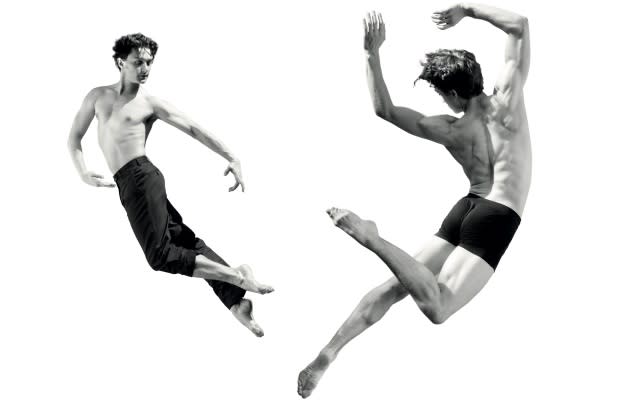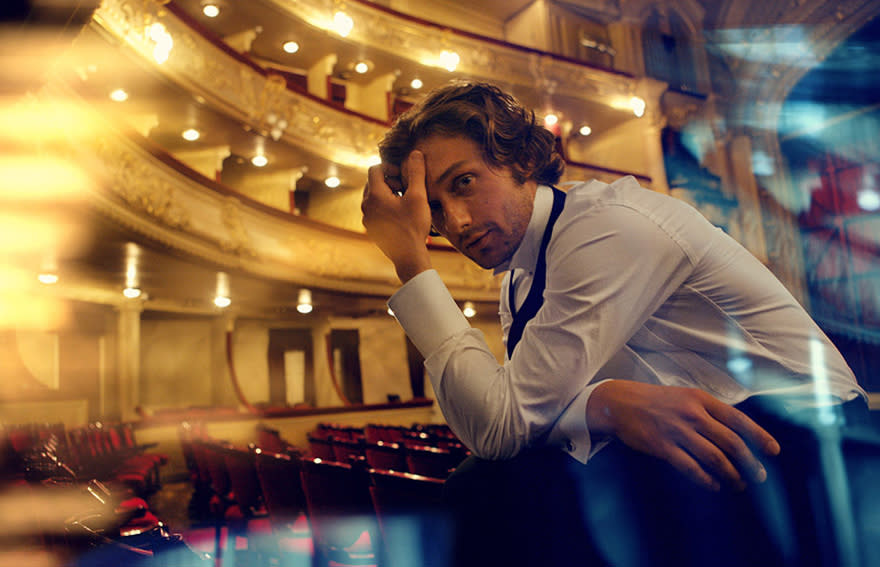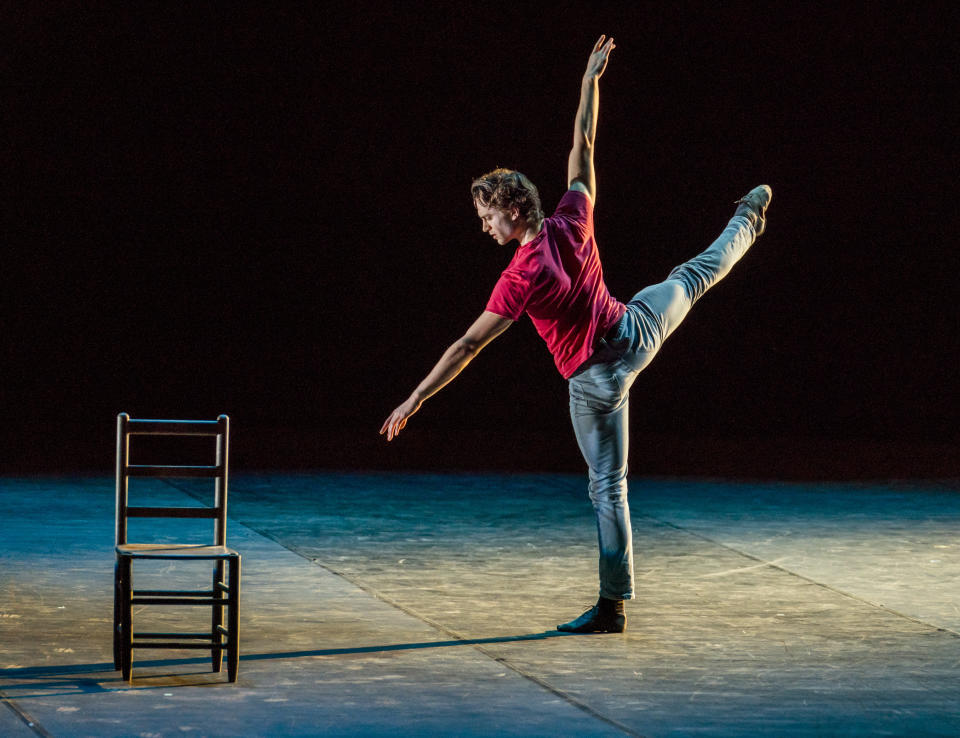Ivan Putrov on the 10th Anniversary of ‘Men in Motion,’ Ukraine and Why Men’s Ballet Is Ready for Its Star Moment
- Oops!Something went wrong.Please try again later.

LONDON — A decade ago, Ivan Putrov, former principal of The Royal Ballet, produced “Men in Motion,” a one-off performance dedicated to the rich history of ballet, past and present, but with a twist — only male ballet dancers were on stage.
Putrov is back for the show’s 10th anniversary at the London Coliseum on Nov. 6 — putting his feet forward for “Dance of the Blessed Spirits,” choreographed by Frederick Ashton, as well as curating the lineup.
More from WWD
The ballet has been on tour in Italy, Moscow, Poland and Ukraine.
“There are general assumptions about the art of ballet; it is always associated with our beautiful ballerina pointe shoes, which is of course so powerful and strong. But for over a century now, the man has gained the right to center attention and has become a muse for creators and choreographers,” he told WWD, explaining that he originally conceived the idea of “Men in Motion” to highlight the development of men in ballet over the last century.

The program will include 20 pieces of ballet works, featuring the classics and revised versions, as well as new contemporary creations.
The works range from “Le Train Bleu,” a one-act ballet choreographed by Bronislava Nijinska in 1924 that Coco Chanel provided the costumes for, to a new piece by award-winning choreographer Arthur Pita, performed by his longtime collaborator Edward Watson, now a répétiteur at The Royal Ballet.
For Putrov, Matthew Bourne’s take on “Swan Lake,” from 1995, originally composed by Pyotr Ilyich Tchaikovsky in 1875, holds great importance to him and in the world of ballet.
“It took the world by storm where all the swans are men. In the very classical version, it’s always girls and the pair are a swan and a prince, so 50 years ago nobody would have dreamt of this,” said Putrov, adding that “now people come to Matthew telling him, ‘We’ve seen your ‘Swan Lake’ and it’s so wonderful, years later we watched the classical version and it’s so strange.’
“We’re in a constant fluid development of the world and that is not being avoided in the role of a man in dance. I’m not saying one is better than the other, of course not, but from the beginning of the 20th century, the man gained the same level of attention as the beautiful ballerinas,” he said, questioning the notion of “what exactly is a male dancer? We have different physiques and capabilities, but even that is changing.”

The name for the ballet, “Men in Motion,” came to Putrov as a literal and metaphorical idea, when he was conceiving the concept in 2012.
“It’s about men progressing through the times and what their role is,” said Putrov, who was born into a family of ballet dancers; his parents, Natalia Berezina-Putrova and Oleksandr Putrov, were part of the Ukrainian National Opera and Ballet.
His mother now teaches in London after escaping the war in March; meanwhile his father, now a photographer, is still in Kyiv.
Putrov organized a fundraiser gala in March with Romanian ballerina Alina Cojocaru, titled “Dance for Ukraine,” raising more than 160,000 pounds for Disaster Emergency Committee’s Ukraine Humanitarian Appeal.
“Dance and dancers are part of the world, so it has reacted,” Putrov said.
“We can say that art is not political, but I feel this is not about politics, it’s about basic rights,” he said, adding “it’s about going forward, which is what we talk about in ‘Men in Motion.’ It’s not about older development or going backward, which is what Russians are sadly doing now trying to reverse the world into barbarity.”
Like any art form, ballet has undergone its fair share of criticism for its elitism and lack of diversity. In Putrov’s 10th anniversary rendition he enlisted the help of dancers from Ballet Black, Birmingham Royal Ballet, Dutch National Ballet, English National Ballet, Royal Swedish Ballet and Stuttgart Ballet.
“It will keep evolving, it will survive, it will develop and it will keep its tradition strong,” said Putrov, pointing out that it’s more important than ever for the fusion of the arts, naming his own collaborators such as Philip Treacy, Nick Knight and Gary Hume.
Best of WWD

